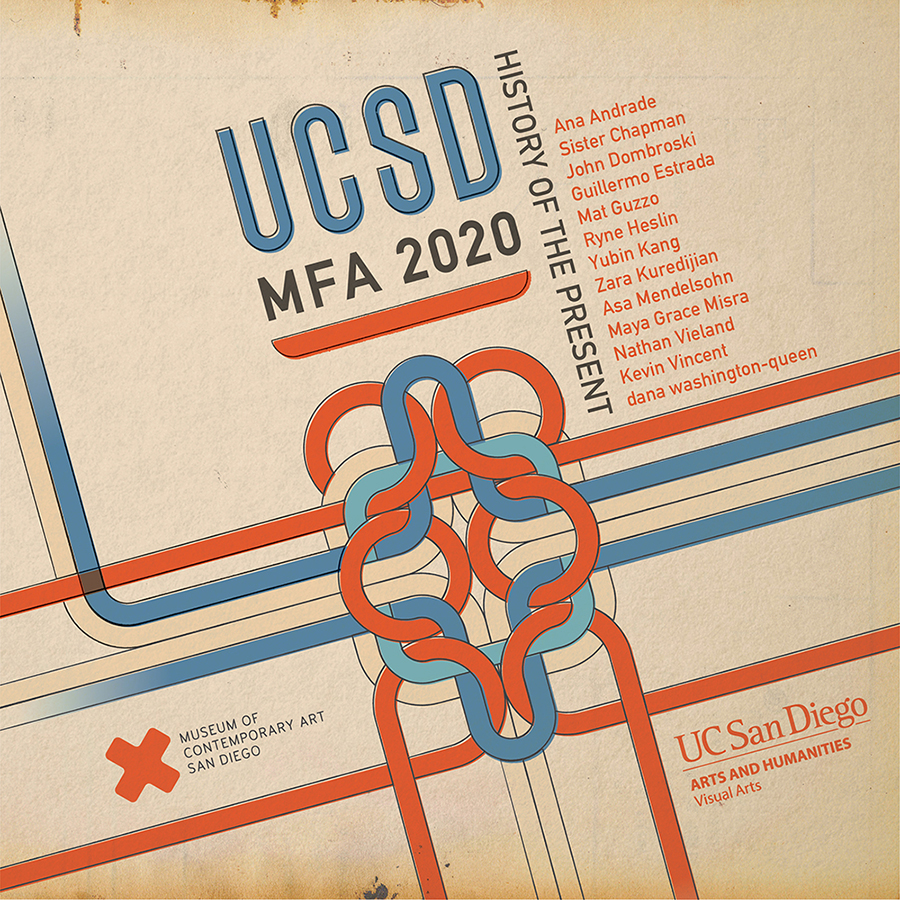HISTORY OF THE PRESENT
Graduating MFA Exhibition
April 18 - May 27, 2020
Museum of Contemporary Art San Diego, Downtown
1001 Kettner Blvd. San Diego, CA 92101
CANCELLED
Due to the Coronavirus pandemic, the exhibition was cancelled. Learn about the artists and works at the Grad Exhibitions website.
Ana Andrade
Sister Chapman
John Dombroski
Guillermo Estrada
Mateus Guzzo
Ryne Heslin
Yubin Kang
Zara Kuredjian
Asa Mendelsohn
Maya Grace Misra
Nathan Vieland
Kevin Vincent
dana washington-queen
Curated by Art History, Theory and Criticism PhD Students Tiffany Beres and Alexanndra Nicholls with MCASD Associate Curator Anthony Graham.
I would like to write the history of this prison, with all the political investments of the body that it gathers together in its closed architecture. Why? Simply because I am interested in the past? No, if one means by that writing a history of the past in terms of the present. Yes, if one means writing the history of the present – Michel Foucault
What does history have to do with contemporary art? When artists use history as part of their art making process, it encourages audiences to confront the idea that history is a construction. When artists reconsider past events, they’re not so much returning to another time and retrieving material or events. Instead, they are restaging those events in the here and now in order to think about the present.
This group exhibition of artists graduating from the UCSD MFA program takes its title from philosopher Michel Foucault’s expression “history of the present,” which appears in the first chapter of Discipline and Punish (1975). In this seminal text, Foucault proposes a history of the Western penal system, illuminating the relevance of studying the past to understanding present power relations and politics. Foucault points out that the past can become a lens to better understand the present-that exploring historical trajectories allows for a better understanding of the contingencies of the present. This is also true for the history of art. A critical analysis of this history, as it is constructed and researched, can alter our observations of contemporary phenomena, opening our eyes to hidden facets of history previously overlooked and taken for granted. Paying particular attention to troublesome, underrepresented and forgotten pasts, these artists are linked by an overarching social agenda: to identify and transform engrained social systems by developing or revising historical concepts. Falling into three distinct categories of historical inquiry, each artist employs a unique strategy for understanding major issues and developments in contemporary life.
– Tiffany Beres and Alexanndra Nicholls
